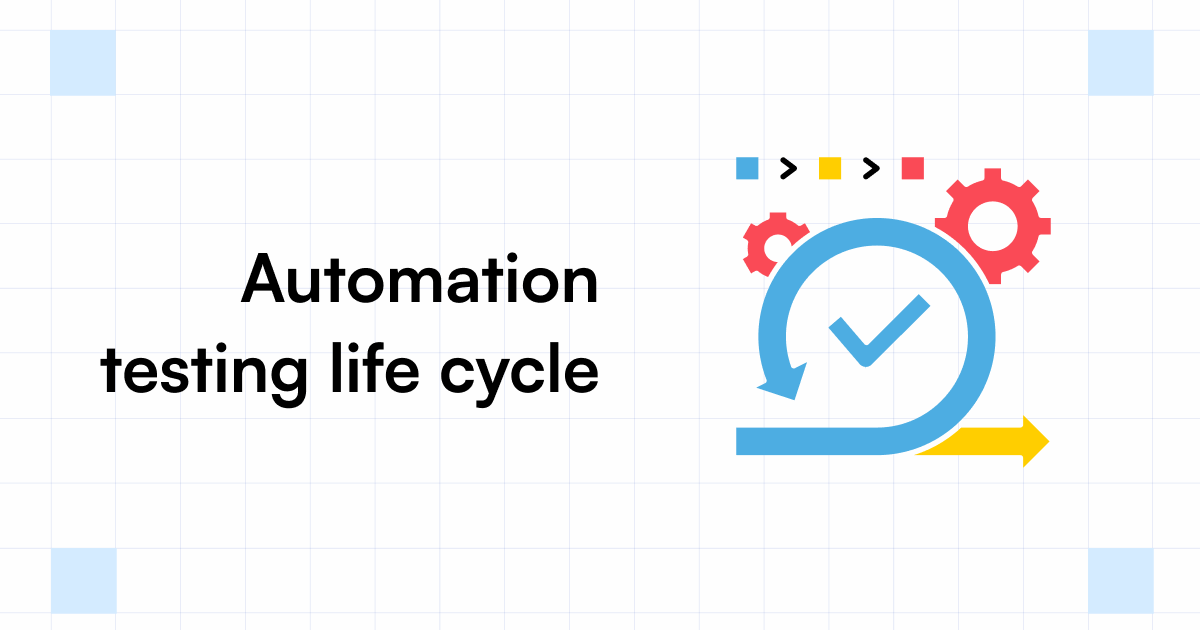Exactly How Automation Testing Transforms Quality Assurance Processes
Exactly How Automation Testing Transforms Quality Assurance Processes
Blog Article
Guaranteeing Success in Automation Examining: Secret Metrics, Obstacles, and Solutions Every QA Team Must Know
In the realm of software application quality control, the landscape of automation screening is ever-evolving, demanding a careful approach to make sure smooth procedures. Key metrics function as the compass guiding QA teams with the substantial terrain of examination automation, losing light on development and locations for enhancement. Challenges loom big, usually casting darkness on the course to success. By recognizing these hurdles and carrying out reliable remedies, QA groups can navigate with intricacies with skill. The trip to understanding automation screening is led with subtleties that require a keen eye for monitoring, evaluation, and constant improvement. automation testing. As the sector propels ahead, the pursuit for optimum efficiency in automation screening continues to be a constant pursuit, urging QA teams to furnish themselves with the understanding and methods crucial for triumph.
Importance of Trick Metrics
Recognizing the significance of key metrics is crucial for evaluating the efficiency and performance of automation testing procedures. Trick metrics work as measurable procedures that supply useful understandings right into various facets of the screening process, such as test protection, examination execution time, flaw density, and test instance effectiveness. By evaluating these metrics, QA teams can determine bottlenecks, inefficiencies, and areas for improvement within their automation screening structure.
One important element of essential metrics is their capability to track development and monitor the total wellness of the screening process (automation testing). They enable stakeholders to make informed decisions based upon data-driven insights, which can cause a lot more reliable testing approaches and better source allocation. Furthermore, vital metrics can help groups set practical goals, determine the success of automation campaigns, and demonstrate the ROI of automation testing initiatives

Common Challenges Encountered
Obstacles frequently experienced in automation testing processes can considerably influence the general effectiveness and effectiveness of QA groups. One of the major difficulties is the option of the ideal test instances for automation. Not all test instances appropriate for automation, and picking the incorrect ones can result in squandered time and resources. In addition, preserving test manuscripts can be a difficult task, particularly as the application undergoes constant changes. Examination manuscript upkeep calls for constant updates and alterations to ensure they mirror the present capability accurately. An additional usual obstacle is the preliminary financial investment needed for establishing automation frameworks and devices. This can be a barrier for some companies, especially smaller sized ones with minimal budget plans. Moreover, automation screening might not cover all aspects of testing, such as use and user experience testing, which still call for manual treatment. Getting over these challenges needs correct preparation, tactical examination case selection, robust maintenance processes, appropriate sources, and a clear understanding of the constraints of automation screening.
Effective Solutions for Obstacles
To resolve the obstacles encountered in automation screening, carrying out efficient options is vital for enhancing the performance and efficiency of QA teams. One key remedy is to invest in robust training programs for QA teams to ensure they have the necessary abilities to YOURURL.com properly use automation tools. Training can link understanding gaps, boost understanding of automation structures, and improve scripting capabilities, inevitably causing much more reliable examination development and execution.
An additional vital option is to establish clear interaction channels within the QA group and with other stakeholders, such as programmers and project supervisors. Effective communication helps in straightening assumptions, sharing progress updates, and immediately dealing with issues or barricades that may occur during the automation testing procedure.

Tracking and Analysis Strategies
Executing reliable surveillance and analysis methods is critical for making certain the success and effectiveness of automation testing processes. In addition, evaluating test outcomes and metrics provides valuable understandings into the top quality of the software program being tested and the efficiency of the screening method.
One trick technique in tracking and evaluation is making use of dashboards that combine appropriate metrics and KPIs in a visually obtainable format. These dashboards offer a read here detailed introduction of test implementation standing, test coverage, flaw trends, and various other critical information. Consistently evaluating and evaluating these control panels can aid QA teams make notified choices, focus on jobs, and enhance testing efforts.
Furthermore, implementing automated notifies and notifications based upon predefined thresholds can boost proactive surveillance and timely intervention. By establishing notifies for performance variances or test failings, teams can resolve issues quickly and prevent them from rising. In general, monitoring and evaluation techniques play a vital function in making certain the performance and success of automation testing efforts.
Continuous Renovation Methods
Enhancing the effectiveness of automation testing processes necessitates the constant improvement of strategies and approaches. Constant renovation methods are crucial for QA groups to adapt to developing innovations and deliver premium software application products. One crucial technique to improving automation screening procedures is to perform regular reviews and retrospectives. By analyzing past screening cycles, groups can determine bottlenecks, inadequacies, and locations for enhancement. Applying comments loops and including lessons learned into future screening frameworks can produce considerable improvements gradually.

Conclusion
To conclude, it is vital for QA teams to understand the crucial metrics, challenges, and options in automation testing to make sure success. By very carefully keeping track of and examining information, executing efficient options to typical obstacles, and continually improving methods, QA teams can enhance their testing procedures and deliver top notch software application items. Complying with these techniques will inevitably lead to more efficient and efficient automation screening methods.
By analyzing these metrics, QA teams can recognize traffic jams, inefficiencies, and locations for renovation within their automation testing structure.
In addition, key metrics can help groups established realistic goals, measure the success of automation campaigns, and show the ROI of automation testing efforts.
Obstacles typically experienced in automation testing procedures can dramatically influence the general effectiveness and efficiency of QA teams. Automation screening might not cover all facets of testing, such as use and customer experience screening, which still need hand-operated intervention.In verdict, it is vital for QA teams to recognize the crucial metrics, difficulties, and options in automation testing to make sure success.
Report this page